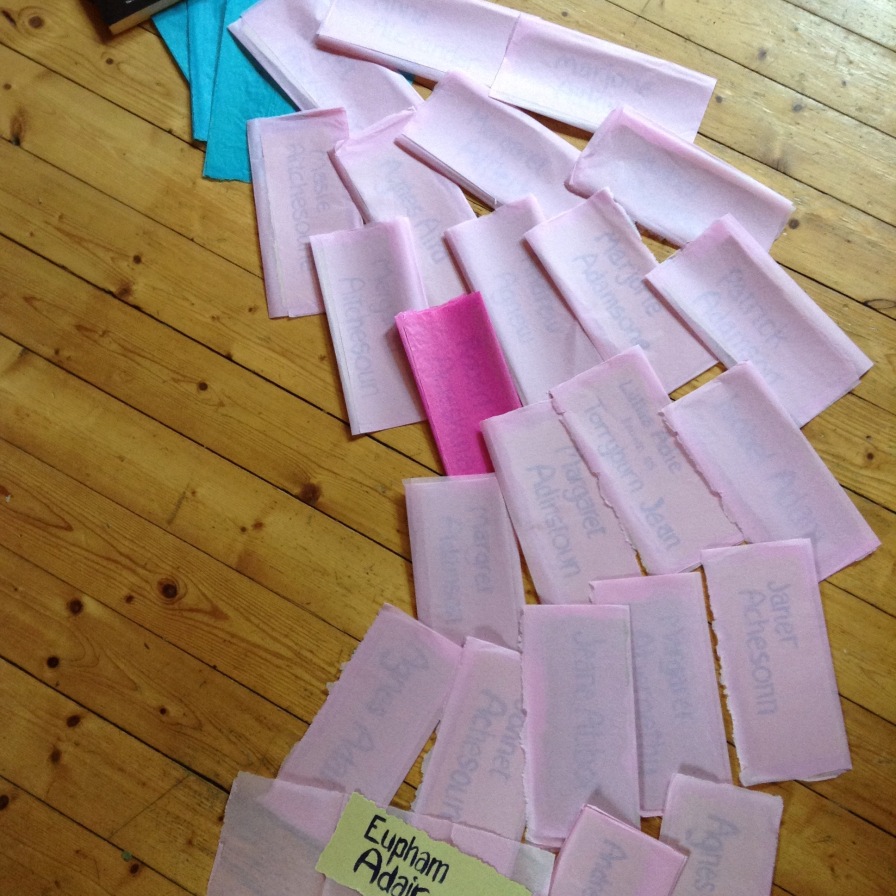In 2018 I experimented with running workshops in a variety of locations. Two of the locations had garden access and at the first I made a collage shown here: “The Pot of Rainbow at the End of the Gold”. For some of the gold strands I used the material of sandpaper. The next workshop was in a church hall, and it was suggested to me that there might be some workshop participants who could have problems with such a location. These experiences got me thinking, and found expression in my commencement of The Sandpaper Project.
The Sandpaper Project is an ongoing piece of participatory art. It is comprised of the names of the individuals who have been accused of witchcraft in Scotland. The names are being painted onto sandpaper which is then wrapped in tissue paper. This respectful recalling and re-recording of the names creates space in which to consider many aspects of their legacy. It is an expansive act of contributing to constructive dialogue.
For many years now I had had a copy of “The Deil’s Ain”, a book by Roy J M Pugh, first published in 2001. It includes a comprehensive gathering of the names of over three thousand men and women who were accused of witchcraft in Scotland, mostly in the seventeenth century. I remember how shocked I was when I first learned these horrific truths of my own country’s history, and the current and continuing shocking state of either widespread ignorance, shameful denial or appropriation of certain aspects of our history to bolster specific viewpoints and attitudes. I confess to having a crusading energy for this piece of work.
I have run a series of open studio sessions at The Palette in St. Margaret’s House, Edinburgh. These resulted in the completion of that part of the project consisting of all those accused whose surnames began with the letter “A”. I laid out the wrapped names, filmed the extent of the river of names and shared on Vimeo: The Sandpaper Project – “A” https://vimeo.com/311707104
In 2019 I ran a session at the first “Remembering Scotland’s Accused Witches” conference in Dunfermline. There I was struck by how many people are now researching their family trees and are finding ancestors amongst the accused. At that point the project veered from a strictly alphabetical order. And now I will be offering the first site specific session on Sunday 2nd February 2020 at Leith Walk Police Box. The University of Edinburgh has recently engaged in the process of mapping the location of places relevant to those people tried under the Witchcraft Act, including the site of their executions. Eleven women were executed at the site of the Leith Police Box, an area now known as Shrubhill, but formerly called Gallow Lea. Four of these women were executed in1675, and seven in 1678. I hope you will join me in the active consideration of adding these women’s names to the archive of “The Sandpaper Project”.
Leith Police Box is a charming pop up space which has warmly encouraged this collaboration that bears steady witness to highlight the necessity of unaddressed beliefs, lives and actions from the past unavoidably continuing to echo down through the centuries, fearsomely spilling into the present. http://leithwalkpolicebox.com/



